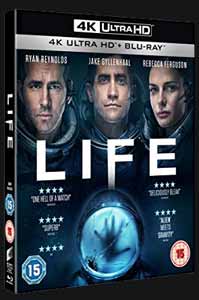|
Click here to return to the main site. Tom Debenham (co-visual effects supervisor) Life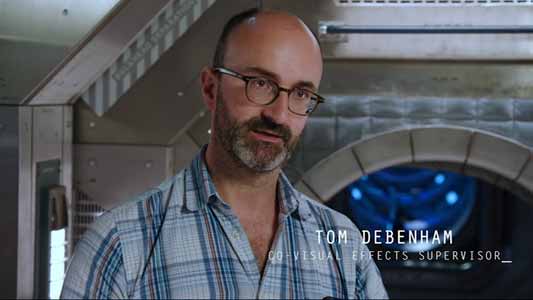 With a background in Fine Art and photography, Tom Debenham has worked as a DoP and visual effects supervisor for over 15 years, and for much of that time has been shooting plate units and elements alongside main unit on many features, and also 2nd unit on films such as Under the Skin for Jonathan Glazer and Finding Altamira for Hugh Hudson. He recently collaborated with Terrence Malick on Voyage of Time - months of experimental element photography and subsequent supervision of post. Tom has also served as DoP on a number of commercials and short films, as well as lighting director for events and installations such as Glazer's 2011 Spiritualized collaboration. Darren Rea caught up with him as Life, for which he was co-visual effects supervisor, was released on Blu-ray and DVD... Darren Rea: How did you originally become involved with Life and typically, with a project like this, how early are you brought on board?
It was clear that we all saw eye to eye and were mutually excited about the project from a visual end; from a storytelling point of view, and I got involved almost at the beginning of prep. I was brought on alongside John [Moffatt] because the whole project had somewhat grown in ambition and also in timescale and it became very clear that there was an awful lot that needed to be looked after - both in prep and in preparation for what was going to be a very short post that needed a lot of organisation. In the early stages was it difficult trying to break down how things would be shot and where the effects would be most effective? There is certainly an aspect of that. You do a visual effects breakdown which informs both the budget and the quantity what you're dealing with and most importantly, I think in the early stages, how you're dealing with it and what your approach is to certain types of shots. I think we knew from the beginning that there were three main problems. One was that it was all set on the International Space Station. We knew we were going to build a certain amount of sets, but we knew that we couldn't build the whole thing in one piece. It would have been vast and impossible to build. So it had to be built in separate pieces. We knew that there were going to be connections. And thirdly there was, of course, the creature, which was a big part of the story and needed an awful lot of thought and development to get that working; to figure out thematically and visually how that would work in confined spaces in zero gravity and help us tell the story. Unlike other alien encounter movies, the film is set in our reality on a vessel that we're familiar with and with views of the Earth that everyone knows. Did this make it easier for you than if you were creating a universe from the ground up? Or did the fact that people know the environment on the movie mean you had to be more careful with how you approached things? It's a good question. I think in some ways it makes it easier, because you have a straightforward frame of reference. We can all look at YouTube and see any number of pictures and sequences from the real International Space Station and know what that looks like. So, there's no shortage of references, but at the same time I think it means that you do have a frame of reference that makes it harder to deviate from that and make it cinematic and feel like what you need it to feel like from a storytelling point of view. We had a lot of collaboration with the art department and how we would approach things photographically with Seamus [McGarvey] the cinematographer, collectively to figure out how the language of light and dark, how we moved around, how we set it. It could be next week but there were aspects of it that needed to feel a little distinct from what we know now, in terms of it not being too rooted and make it more of a universal story - less documentary and more its own thing. How did you get involved in the effects industry? Was it something you were interested in from an early age? No, not particularly. It was somewhat by accident really. I come from a fine art photography background and I was interested in pursuing the photographic side of things, but happened to end up getting a job as a runner at The Computer Film Company and it turned out to be a fascinating and very pioneering world at that time. It was a very intriguing mixture of science and art and figuring things out technologically in order to make pictures you didn't know could exist. It was a very intriguing thing and has become something that I'm passionately interested in progressing and making stories better as a result of it. Because I come from the art and photography I'm also very interested in keeping things grounded on pictures and photography and how they tell stories without wanting to showoff or do anything for the sake of being clever. There's a bit of a temptations with visual effect and sci-fi in particular, to make it a bit of a showboating experience and upping the ante and competing with all the other blockbusters. I think this story was a good example of one that was relatively restrained in that sense. It's got its visual spectacle but it also needed to feel intimate and real. It's ultimately about people, so you don't really want what you do to distract from that. It needs to be an experience for the audience, but you want to make sure you're taking the audience along for a ride with people that they get to know. Do you remember the first visual effect that blew you away at the cinema?
What remains with me about that, and films like Blade Runner, is overwhelmingly the atmosphere and the fact that you're led to believe in something that you know isn't real but is intriguing and has got a mood and an atmosphere and a reality that you buy into. I think that's very exciting. I think what that does to human stories within it is also really exciting and this was a good chance to play with those flavours, I suppose. Can you still switch off when you go to the cinema or are you constantly scrutinising the visual effects? If they're not good, then certainly it does bump you out of the story, but not just me. All audiences are much more sophisticated nowadays and I think we're tuned in to whether things are believable or not. Kids are so saturated with imagery these days and I think they're some of our harshest critics. My kid's know when something's well done or not. They know a bit about what I do, but they don't say it to please me or to be clever I think they just know. They'll say: "Dad, that didn't look very real did it?" It does bump you out of a story.
Is it hard keeping up to speed with advancements in technology in your field? It's important to do that, but I find that a lot of what I do these days - even though there are so many tools and so much sophistication available to us - if I'm giving feedback to artists building a shot I tend not to get overly technical. I try to remind them of why they're doing it, and say: "Does that feel like something to you? Does it work?" I think we're at a luxurious stage of our industry where we can take some of that for granted but at the same time I think we've got to be empowering people to think "Yup, we can do that" but at the same time are we missing the wood for the trees or obsessing about a technical detail? Is there ever enough time or money?
I don't think that was particularly the case with this film, but it can happen with big budget stuff, that's there's a temptation to do hundreds of versions of things, not necessarily making it better than your first instincts might have told you. We do have tools that enable us to work much faster than we ever did and I think that sometimes allows you to be more instinct about what you do. And I think that collectively as film makers we need to learn to trust our instincts a bit more. It's the same when you're actually filming. If you get something right on the first take, you don't have to do another 20 takes just to prove that you got the first one right. Maybe that's enough. Maybe you do one for luck to give you some choices, I think the same can apply with visual effects. Sometimes working fast and working efficiently and trusting your instincts. It's very similar in feel and scope to Alien. Were there any elements that were deliberately shied away from to prevent obvious comparisons? And were there any homages slipped in there? It was not something that anybody was particularly frightened of paying homage to. I think Daniel, as a filmmaker, was very open. He wanted to absorb his influences and use that to make his language stronger. I don't think there was anything that anyone was avoiding. Obviously we couldn't make the creature a replica of the other creature. I think that was probably the hardest area to get right - to make something that felt as iconic, powerful and scary as the original creature without replicating it. There's a lot of discussions around that and I think that was the hardest area.
Was it actually one shot or was it patched together? No, it was 13 separate pieces. That was very much a big part of what I spent a lot of time doing on the film was working out how to do that, building very advanced previs and then what we call techvis, which is working out specifically how you're going to engineer getting the camera through tight spaces. You have a model of a crane that you push through as far as it will go and then you figure out how you can hide a transition from a crane to a handheld camera to another crane in another bit of the set. Because the limits of the set and how you can travel cameras through it where they were built in separate pieces. There's a lot of mind bending stuff where we're going round corners and turning things upside down and people, with the zero gravity, thrown in. There's very little CG, there's a few bits of patches but mostly it's lining up cameras and doing things in a very disciplined old fashioned way. It's a huge amount of collaboration with all the departments: The camera team, the grips, the set design and rigging, stunts... all those departments had to be in tune with each other. I was a big part of using our visual effects tools to organise and structure how those different things came together. It's satisfying to be able to pull something like that off and hope that that doesn't draw attention to itself, but accumulates in a way that makes you think: "Wait a minute. We didn't cut there, did we." and that sort of buys you into believing the reality of the world. That's the hope with a shot like that. The alien doesn't make any vocal sounds at all - which is actually pretty terrifying in itself. Was this originally the idea or was it a budgetary decision? It's cheaper if you don't have to show its mouth moving...
The idea of not explicitly having a face, but having something that you identified with as a point of contact, was something that was very much talked about and we went backwards and forwards a lot on how that would implement itself. I think that was something that was wanted by the studio, they wanted it to have a face to get the audience to engage with it and be frightened of it in a certain way. I think they were right in pushing that basic instinct of "This thing needs to have a face", and figuring out a smart way of doing that doesn't just turn it into a predictable creature. But, yes, sound wasn't specifically part of that. And I don't think that it was a budget thing that we avoided. I think it would have been wrong had it spoken. I think it was more menacing and scary the fact that it didn't. Is there anything in the film that niggles you when you see it? An effect or scene that you wish you'd had more time to polish or finish a little better? Er... not necessarily. Er... No. I wasn't involved with it all the way through post, so I didn't have the full pain of the experience. But in terms of stuff like the opening shot, I'm very pleased and proud of what we did. I think the creature did it's job pretty well.
Is wire removal still a difficult process? It's not too bad when they're behind people or against plain backgrounds. We had to use some pretty advanced rigs, which we call a twisty belt rig, which is basically a circular steel belt with bearings in it so that people can turn over inside the wires and behave either way up. Things like that when they cross over people's bodies or worse still, cross over faces. That's pretty nasty and that's the sort of stuff that you just end up having to drive through because you've got to keep shooting. And then you can't spend as long as you might like to avoid those issues. And sometimes they're just unavoidable. One of the big parts on set is policing that kind of stuff and saying: "We gotta go again. That wire went across someone's face and we can't get that performance back". Things like that would be a constant struggle for everyone to try and get right. We muddled our way through [laughs] and I think most of it worked [laugh]. Can you talk about what your next project is?
Isn't that a lot of work? It must be like doing a string of movies... It is, yeah. It is very demanding. They're not quite the scale of movies... although some of them are, actually. On TV schedules the ambitions are no less than they are on film. But, like I was saying earlier, sometimes the pace of working, where you just simply have to drive through things and make decision... and sometimes it's meant that we've done a lot of things on this that I probably wouldn't do quite so readily - or you wouldn't be let to do quite so readily. Like some old school things using projection rather than blue screen, simply because we had to get through a huge amount of stuff on limited resources and just make sure everyone knew what they were doing. That, plus shooting some model work in a way that we haven't really done for quite a while. We bought into that and it was important that we fed the cut and made sure the edits looked as close to what the director intended as possible. So it's been nice to take a few creative risks which have really paid off and been, I think, exciting for everybody.
Life is out now on Blu-ray, DVD and Digital Download. Click here to buy this 4K Ultra HD Blu-ray - Amazon.co.uk Return to... |
|---|
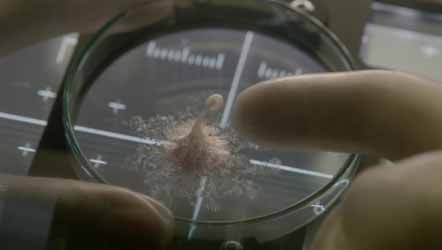 Tom Debenham: I was involved via the visual effects producer, Victoria Keeling and by my contact with the other visual effects supervisor, John Moffatt - I've known both of them for a long time. I also knew the DP [director of photography] Seamus McGarvey so I got invited for a meeting and met Daniel Espinosa [director] for the first time at Shepperton, I guess at the beginning of last year [2016], and came on very early in prep.
Tom Debenham: I was involved via the visual effects producer, Victoria Keeling and by my contact with the other visual effects supervisor, John Moffatt - I've known both of them for a long time. I also knew the DP [director of photography] Seamus McGarvey so I got invited for a meeting and met Daniel Espinosa [director] for the first time at Shepperton, I guess at the beginning of last year [2016], and came on very early in prep.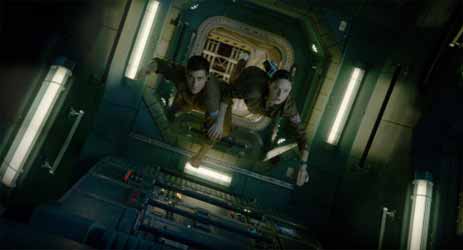 I think the second critical aspect is that it's set in space and there is no gravity and we knew from the beginning that that was going to be a major challenge. Various people in previous films had tackled it in a number of different ways and we had to look very smartly at how to build on the success of others but also make it our own and work within our parameters.
I think the second critical aspect is that it's set in space and there is no gravity and we knew from the beginning that that was going to be a major challenge. Various people in previous films had tackled it in a number of different ways and we had to look very smartly at how to build on the success of others but also make it our own and work within our parameters.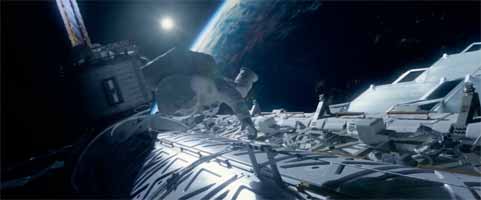 I think you have to be quite aware of that as a visual language and that makes it a very nuanced and tricky thing to get right. You have got an awful of good reality that gets the audience in believing in it as a real thing. But it does have to be its own thing as well as the real thing that we're familiar with.
I think you have to be quite aware of that as a visual language and that makes it a very nuanced and tricky thing to get right. You have got an awful of good reality that gets the audience in believing in it as a real thing. But it does have to be its own thing as well as the real thing that we're familiar with.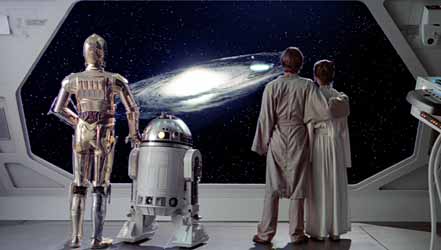 I suppose, as a kid, The Empire Strikes Back was a strong visual spectacle. I remember seeing that at The Odeon, Leicester Square with my dad. It was a big world. It was intriguing the fact that you could sort of escape into something you believed in as another world.
I suppose, as a kid, The Empire Strikes Back was a strong visual spectacle. I remember seeing that at The Odeon, Leicester Square with my dad. It was a big world. It was intriguing the fact that you could sort of escape into something you believed in as another world. 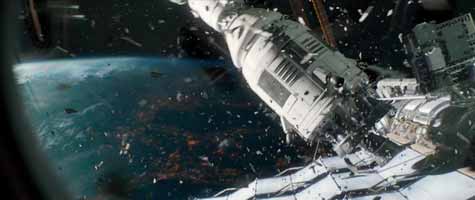 I think it's something that gets quite often forgotten, the fancier we try to be. It's just simple things really well and making well they're really seamless in terms of storytelling. That doesn't get easier, you've still got to pay a huge amount of attention to doing the very simplest of tasks well and making sure the nuance of light on the side of a face is believable in the situation that it's in. All of those things are hugely important and people do tune into them.
I think it's something that gets quite often forgotten, the fancier we try to be. It's just simple things really well and making well they're really seamless in terms of storytelling. That doesn't get easier, you've still got to pay a huge amount of attention to doing the very simplest of tasks well and making sure the nuance of light on the side of a face is believable in the situation that it's in. All of those things are hugely important and people do tune into them. 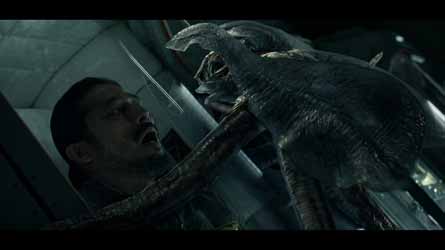 [Laugh]. The simple answer is no, but I think sometimes with big studio films there's too much time and money and things get over worked and over worried.
[Laugh]. The simple answer is no, but I think sometimes with big studio films there's too much time and money and things get over worked and over worried. 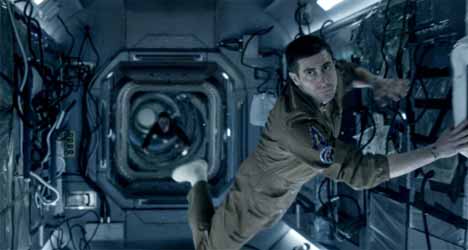 I think one of the things I hope we succeeded in, and perhaps did better, was the opening shot, which I was very much involved in planning and executing, which was the long travel through the empty spaceship where we gradually meet the characters. We did look a lot at Alien and how we travel through the ship and how those empty spaces help to give you an atmosphere and help to introduce to the world. So that, in it's own way, was definitely a homage. I think we did it our own way, and hopefully made it immersive and an experience that accumulated and drew you into the story.
I think one of the things I hope we succeeded in, and perhaps did better, was the opening shot, which I was very much involved in planning and executing, which was the long travel through the empty spaceship where we gradually meet the characters. We did look a lot at Alien and how we travel through the ship and how those empty spaces help to give you an atmosphere and help to introduce to the world. So that, in it's own way, was definitely a homage. I think we did it our own way, and hopefully made it immersive and an experience that accumulated and drew you into the story.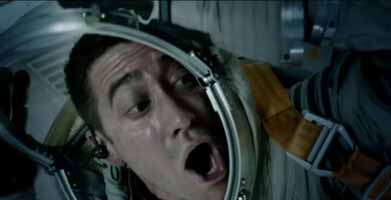 I don't remember any specific conversations about the sounds that it might make, but they were more ideas that would possibly influence the way it moved. If you were to imagine the sound of it moving it would be like shuffling a pack of cards or flicking through a book and it would have some sort of noise of that nature.
I don't remember any specific conversations about the sounds that it might make, but they were more ideas that would possibly influence the way it moved. If you were to imagine the sound of it moving it would be like shuffling a pack of cards or flicking through a book and it would have some sort of noise of that nature. 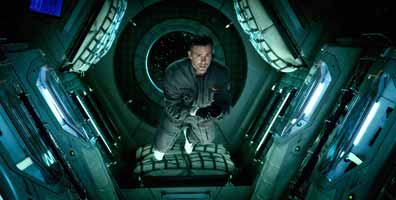 There was a lot of frustrations in shooting, just because of the physical constraints of having to work with people on wires and rigs in the zero gravity world. And I think it would have been nice to have had even more time to sort of finesse that world and think about ways of doing things more freely. Perhaps turning sets different ways up to defeat gravity and play with those kind of ideas. But I think ultimately you look back at it and those frustrations melt away and you accept it. There are moments that I can spot where I feel like they were on wires and we've removed them. But I hope that doesn't niggle with the audience.
There was a lot of frustrations in shooting, just because of the physical constraints of having to work with people on wires and rigs in the zero gravity world. And I think it would have been nice to have had even more time to sort of finesse that world and think about ways of doing things more freely. Perhaps turning sets different ways up to defeat gravity and play with those kind of ideas. But I think ultimately you look back at it and those frustrations melt away and you accept it. There are moments that I can spot where I feel like they were on wires and we've removed them. But I hope that doesn't niggle with the audience.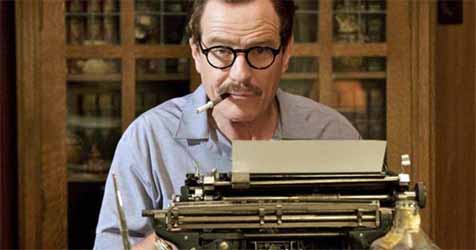 Yes, At the moment I'm working on more science fiction. It's an Amazon and Channel 4 series on Philip K. Dick short stories [Philip K. Dick's Electric Dreams]. It's TV rather than film, which is a kind of interesting and very fast moving departure. But it's very nice in that it's a lot of separate stories. Each with their own challenges and very distinct flavours: different directors, different editors, different DPs and different writers. They're all one hour films really, with huge ambitions, and a lot of visual excitement, but also a lot of very smart writing and storytelling. They're good fun. I'm enjoying it.
Yes, At the moment I'm working on more science fiction. It's an Amazon and Channel 4 series on Philip K. Dick short stories [Philip K. Dick's Electric Dreams]. It's TV rather than film, which is a kind of interesting and very fast moving departure. But it's very nice in that it's a lot of separate stories. Each with their own challenges and very distinct flavours: different directors, different editors, different DPs and different writers. They're all one hour films really, with huge ambitions, and a lot of visual excitement, but also a lot of very smart writing and storytelling. They're good fun. I'm enjoying it.